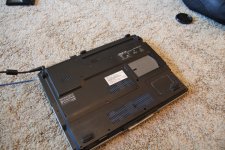computerdude92
Veteran Member
It turns out collecting used laptops is the best affordable option for me regarding retro gaming. I remember my dad had a WinVista HP Dv6000 laptop with an AMD Turion 64 X2 CPU and it ran great when downgraded to XP, but he wasn't a gamer.
I know I need at least 128MB of video ram because my most demanding XP game I have is Bully: Scholarship edition. I am religiously an AMD person, (except for approx early 2000's Intel systems and older) so that means I only want Vista/7 laptops with AMD CPUs. I also really want a quiet gaming experience and I want my laptops to be models with good cooling and without much fan noise.
I am ok with modest gaming performance, but the GPUs in the laptops also need to be strong enough to play 720p and 1080p video files.
Thanks for any recommendations.
I know I need at least 128MB of video ram because my most demanding XP game I have is Bully: Scholarship edition. I am religiously an AMD person, (except for approx early 2000's Intel systems and older) so that means I only want Vista/7 laptops with AMD CPUs. I also really want a quiet gaming experience and I want my laptops to be models with good cooling and without much fan noise.
I am ok with modest gaming performance, but the GPUs in the laptops also need to be strong enough to play 720p and 1080p video files.
Thanks for any recommendations.
Last edited:



